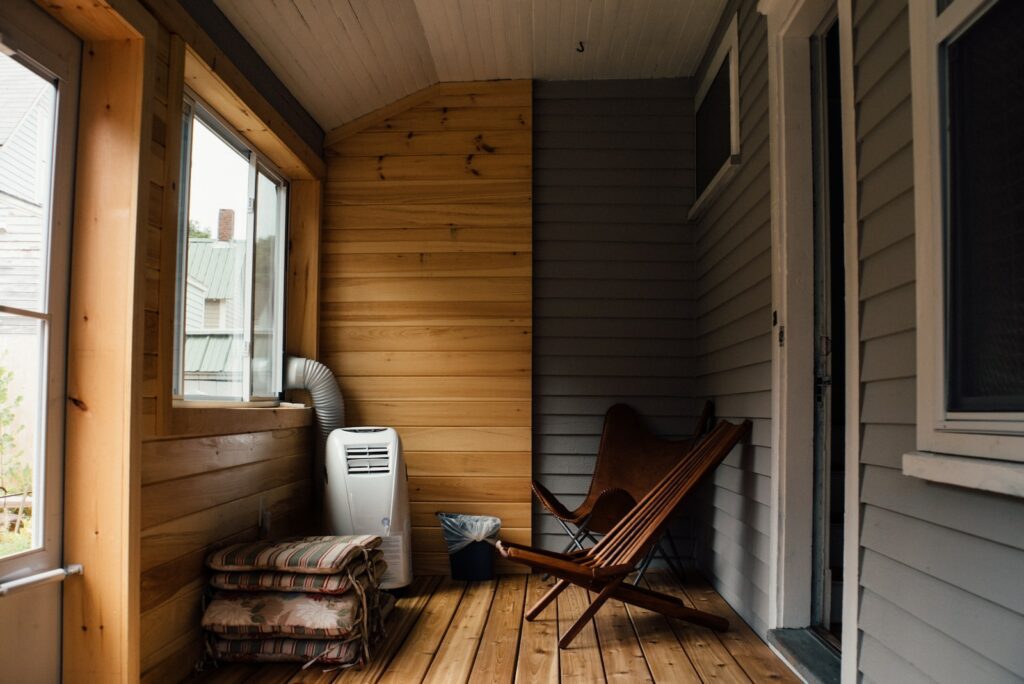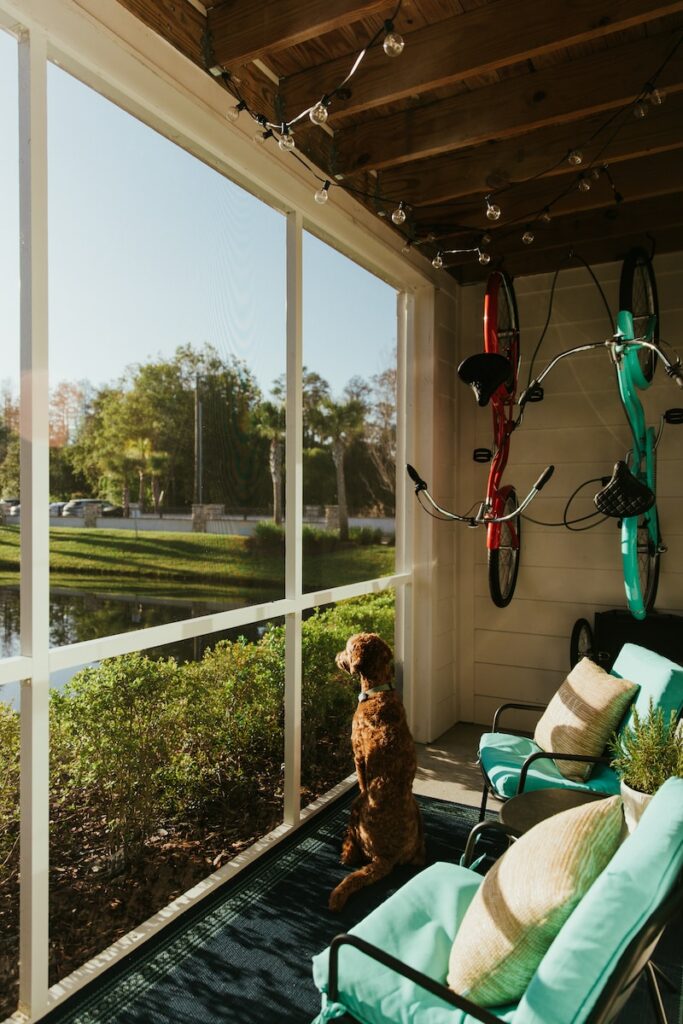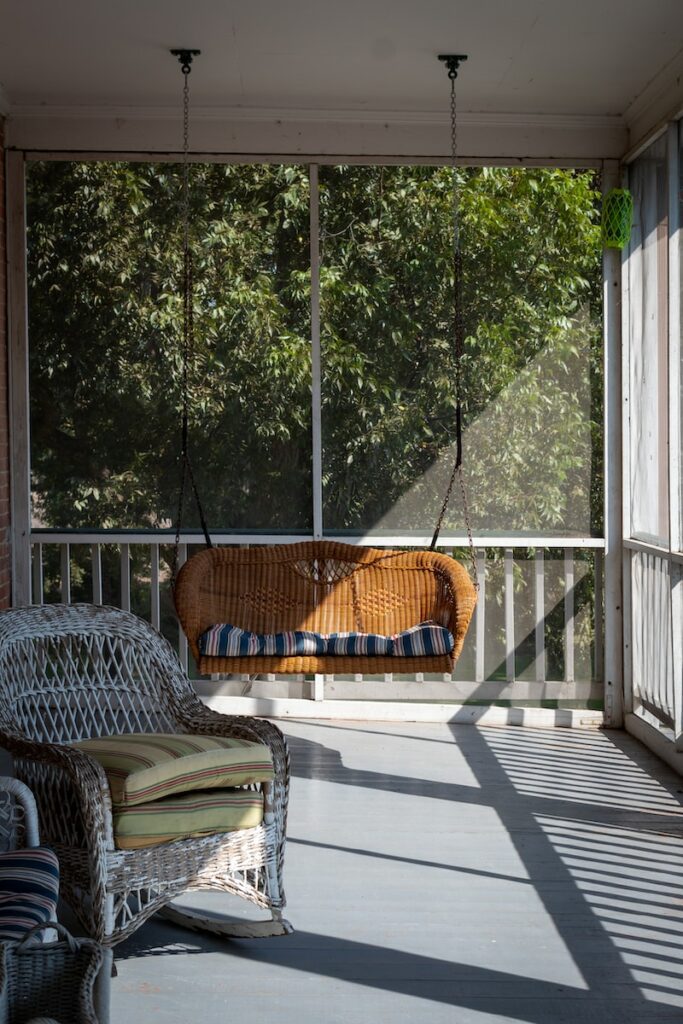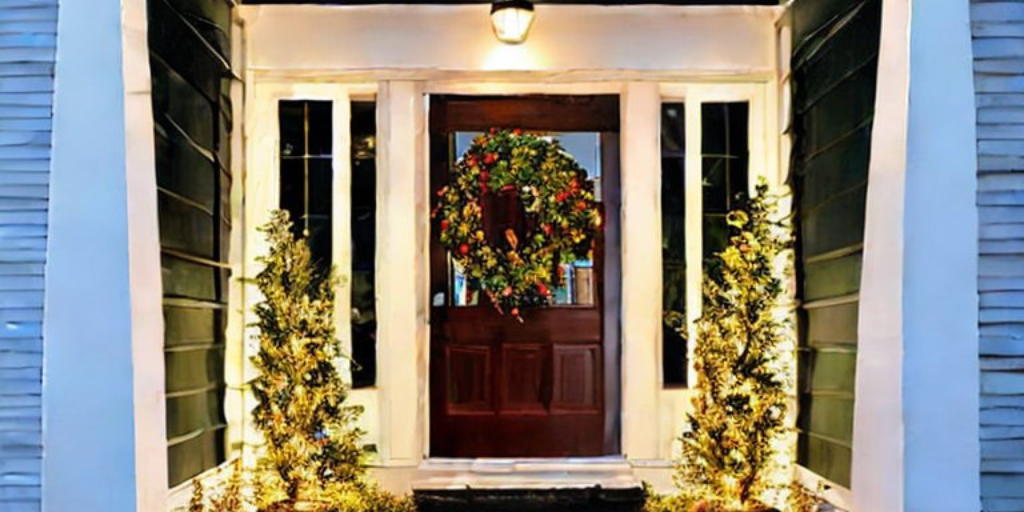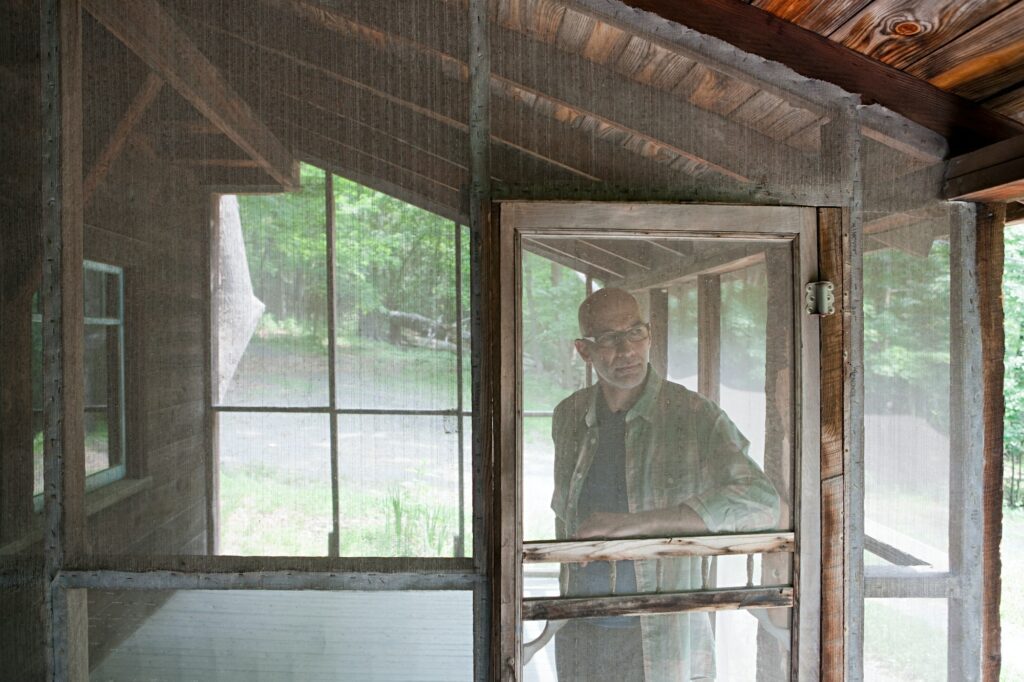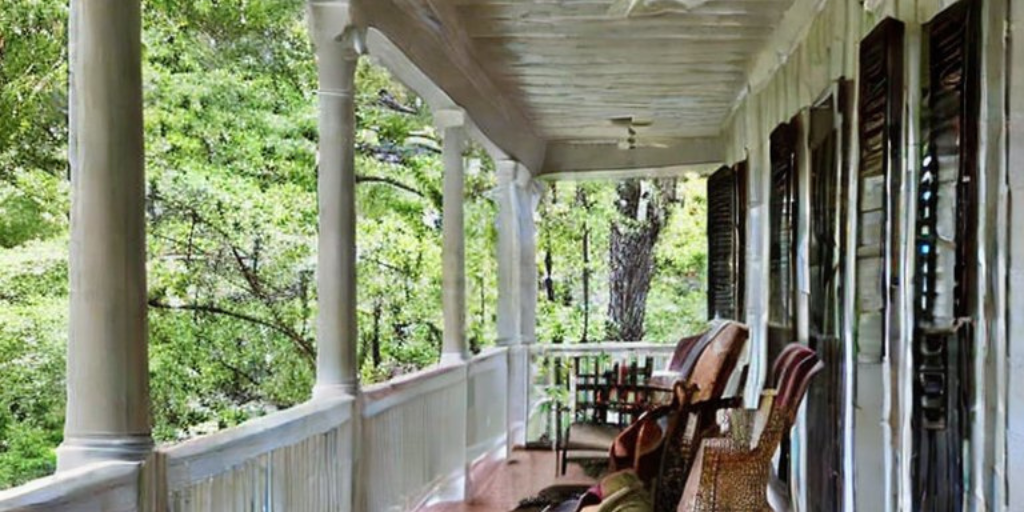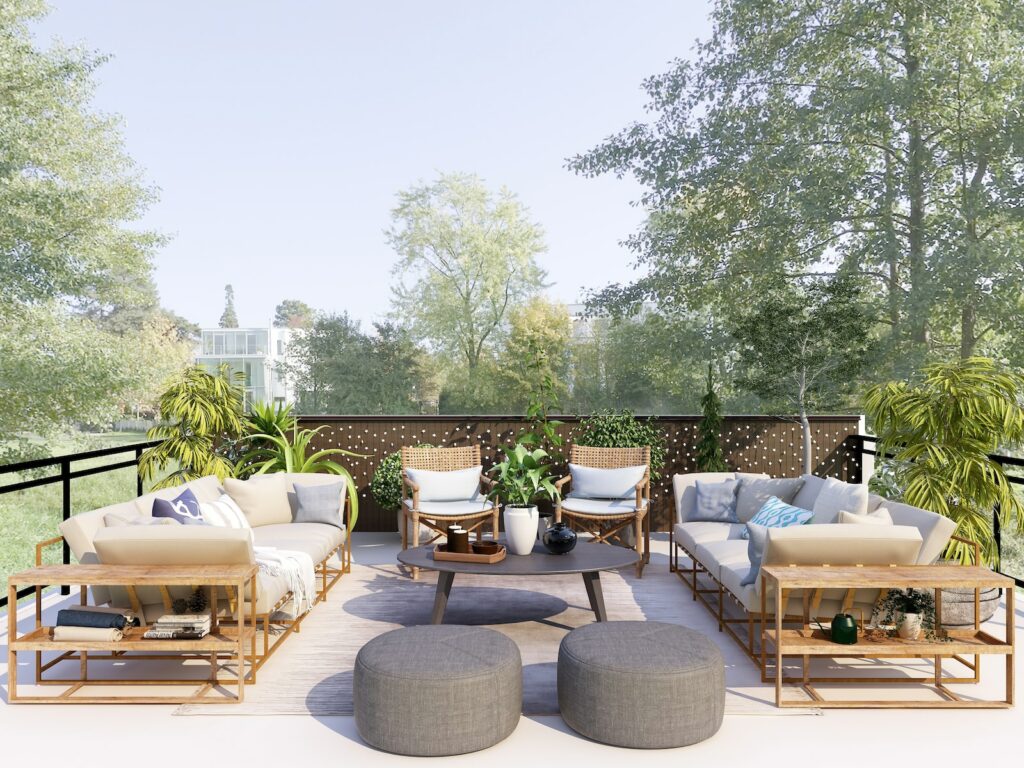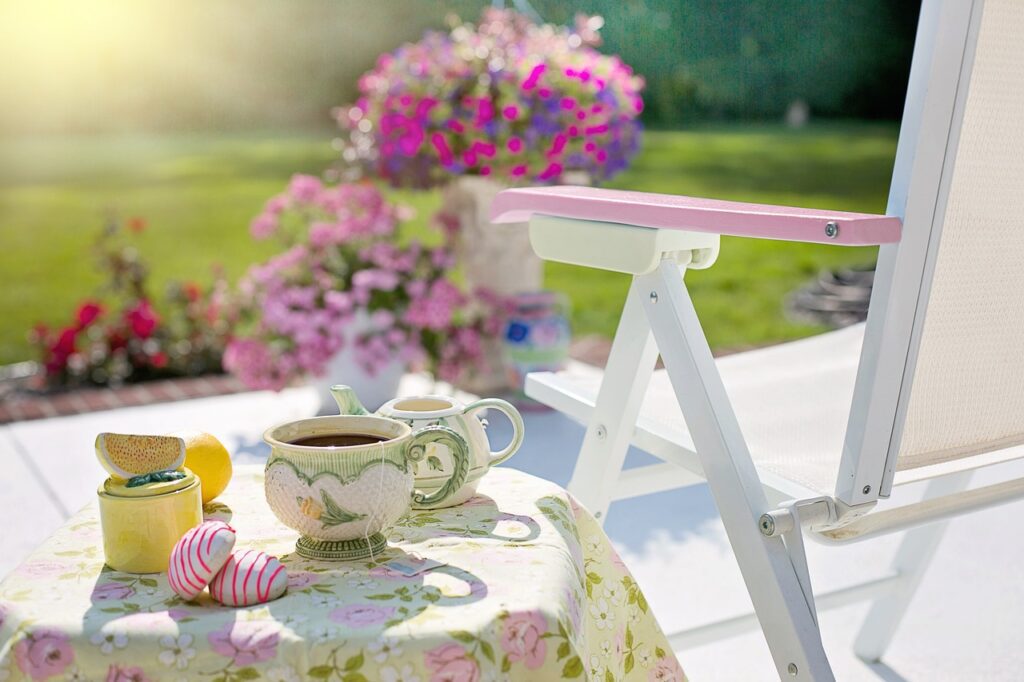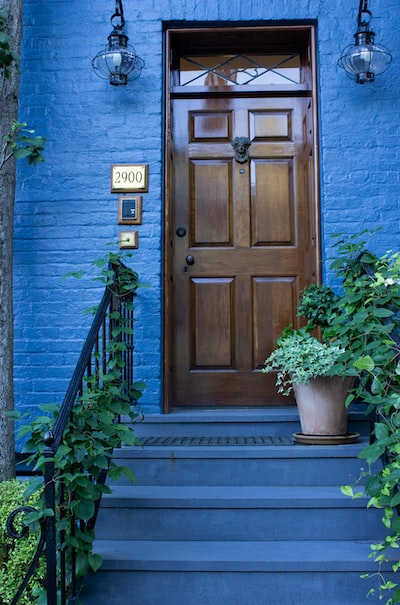Do you want to know how to close in a porch? A porch is a fantastic space to relax and enjoy the outdoors, but sometimes, the weather can make it difficult to do so. Closing in your porch can provide a comfortable space to enjoy the outdoors, no matter the weather.
In this guide, we’ll explore some effective ways to close in a porch and create a cozy, usable space. If you want to learn how to close in a porch, follow the information shown below!
What are the best materials to close in a porch?
Contents
- 1 What are the best materials to close in a porch?
- 2 How much does it cost to close in a porch?
- 3 Can you close in a porch with windows?
- 4 What are the benefits of closing in a porch?
- 5 How to close in a porch on a budget?
- 6 Is it difficult to close in a porch?
- 7 How to decorate a closed-in porch?
- 8 How to insulate a closed-in porch?
- 9 Can you close in a porch without a building permit?
- 10 Can you close in a porch with a retractable screen?
- 11 How to add electrical outlets to a closed-in porch?
- 12 How to add heating and cooling to a closed-in porch?
- 13 How to make a closed-in porch more energy-efficient?
- 14 Final remarks on how to close in a porch
The best materials to close in a porch depend on your personal preference, budget, and the climate in your area. Here are some popular options:
Screens: Screens are a cost-effective way to close in a porch, allowing you to enjoy the fresh air and natural light while keeping insects and debris out.
Glass: Glass is a more durable option that provides protection from the elements while still allowing natural light in. You can choose from tempered or laminated glass for added safety.
Acrylic panels: Acrylic panels are a lightweight and shatterproof alternative to glass that provide good insulation and can withstand harsh weather conditions.
Vinyl windows: Vinyl windows are a popular choice for closing in a porch. They are energy-efficient, easy to clean, and come in a variety of styles and colors.
Aluminum framing: Aluminum framing is lightweight, durable, and corrosion-resistant, making it an ideal choice for enclosing a porch.
Ultimately, the best materials for closing in a porch depend on your specific needs and budget. It’s essential to work with a professional contractor who can help you choose the right materials for your porch enclosure.
How much does it cost to close in a porch?
The cost of closing in a porch can vary widely depending on several factors such as the materials used, size of the porch, the extent of customization, and labor costs in your area.
To give you a rough estimate, the cost to close in a porch can range from $500 to $20,000 or more. The lower end of the price range is usually for simpler screen enclosures, while the higher end is for more complex and custom-designed enclosures, such as those made of glass or high-quality materials.
Some of the costs to consider include materials, labor costs, any permits required, and the cost of removing any existing structures or materials. Additionally, any electrical or plumbing work required may add to the overall cost.
It’s best to consult with a professional contractor to get an accurate estimate of the cost to close in your porch. They can assess your specific needs and provide you with an estimate that reflects the materials and labor costs in your area.
Can you close in a porch with windows?
Yes, you can close in a porch with windows. In fact, windows are a popular option for enclosing a porch, as they provide protection from the elements while still allowing natural light in. There are several types of windows that you can use to close in a porch, including:
Sliding windows: Sliding windows are a popular option for porch enclosures as they are easy to operate and provide good ventilation.
Casement windows: Casement windows open outward and provide a larger opening for better ventilation. They also provide an unobstructed view of the outdoors.
Double-hung windows: Double-hung windows are a classic style that is commonly used in porch enclosures. They are easy to operate and provide good ventilation.
Awning windows: Awning windows are hinged at the top and open outward, providing ventilation even during light rain.
When choosing windows for your porch enclosure, it’s essential to consider factors such as energy efficiency, durability, and style. A professional contractor can help you choose the best windows for your specific needs and budget.
What are the benefits of closing in a porch?
Closing in a porch can offer several benefits, including:
Increased living space: Closing in a porch can provide you with additional living space that you can use for a variety of purposes, such as a playroom, home office, or entertainment space.
Protection from the elements: A closed-in porch can provide protection from the elements, including wind, rain, and snow, allowing you to use the space year-round.
Increased privacy: A closed-in porch can provide increased privacy and seclusion, making it an ideal space for relaxation and quiet contemplation.
Added home value: Closing in a porch can add value to your home, increasing its resale value and making it more attractive to potential buyers.
Improved energy efficiency: A closed-in porch can improve the energy efficiency of your home by providing an additional layer of insulation, reducing energy consumption, and lowering utility bills.
Increased security: A closed-in porch can provide increased security and protection against intruders, as well as keeping pets and children safely contained.
Overall, closing in a porch can provide you with a versatile and comfortable space that adds value to your home and enhances your quality of life.
How to close in a porch on a budget?
Closing in a porch on a budget is possible with some creative planning and cost-saving measures. Here are some tips to help you close in a porch on a budget:
Use screens: Screens are a cost-effective way to close in a porch, providing protection from insects and debris while allowing natural light and fresh air to flow through.
Use affordable materials: Consider using affordable materials such as vinyl or aluminum framing instead of more expensive options like wood or steel.
Shop around for materials: Shop around for the best prices on materials, including windows, doors, and screening materials. Look for sales and discounts to save even more.
DIY where possible: If you have some DIY skills, you can save money by doing some of the work yourself, such as painting or installing the screening.
Consider secondhand materials: Look for secondhand materials, such as doors or windows, at thrift stores, salvage yards, or online marketplaces.
Opt for simple designs: Consider a simple, straightforward design for your porch enclosure to save on labor and materials costs.
Work with a professional: While you may want to do some of the work yourself, it’s important to work with a professional contractor to ensure that your porch enclosure is structurally sound and meets local building codes.
Closing in a porch on a budget requires careful planning, research, and creativity, but it can provide you with an affordable and enjoyable additional living space.
Is it difficult to close in a porch?
The level of difficulty involved in closing in a porch can vary depending on several factors, such as the size of the porch, the materials used, and the extent of customization. Closing in a porch can be a complex project that requires careful planning and attention to detail, but it is usually not an overly difficult process.
The process typically involves installing a framework, such as wood or aluminum, around the perimeter of the porch, and then adding the walls, doors, and windows. The roof of the porch may also need to be modified or replaced to ensure that it can support the additional weight of the enclosure.
While it is possible to close in a porch as a DIY project, it’s important to note that it can be a significant undertaking and may require specialized skills and tools. It’s often best to work with a professional contractor who has experience in porch enclosures to ensure that the project is completed safely and efficiently.
Overall, closing in a porch may involve some level of difficulty, but with the right planning, materials, and professional guidance, it can be a manageable and rewarding project.
How to decorate a closed-in porch?
Decorating a closed-in porch can be a fun and exciting project that allows you to create a cozy and inviting space that suits your style and needs. Here are some tips for decorating a closed-in porch:
Choose comfortable seating: Select comfortable seating options, such as chairs or sofas with plush cushions, that will allow you and your guests to relax and enjoy the space.
Add color and texture: Use colorful accent pillows, throws, and rugs to add warmth and texture to the space. Consider using natural materials such as wicker or rattan for a cozy, relaxed feel.
Incorporate plants: Plants can add life and color to a closed-in porch. Consider using potted plants or hanging baskets to add a touch of nature to the space.
Use lighting: Use lighting fixtures to create a warm and inviting atmosphere. Consider using string lights, lanterns, or candles to add a cozy feel.
Incorporate functional elements: Use functional elements such as shelving, cabinets, or a small table to provide storage space or as a place to enjoy meals or drinks.
Personalize the space: Incorporate personal touches, such as artwork or family photos, to make the space feel uniquely yours.
Consider the view: If you have a nice view from your porch, consider using window treatments that allow you to enjoy it, such as sheer curtains or blinds that can be easily opened.
Overall, decorating a closed-in porch can be a creative and enjoyable project that allows you to create a comfortable and inviting space that suits your lifestyle and tastes.
How to insulate a closed-in porch?
Insulating a closed-in porch is an important step in making it a comfortable and usable living space year-round. Here are the steps to insulate a closed-in porch:
Choose insulation materials: The first step in insulating a closed-in porch is choosing the right insulation materials. Some options include fiberglass batts, spray foam, or blown-in cellulose insulation. The best choice will depend on the climate in your area, the size of the porch, and your budget.
Install insulation between the studs: If you have a framed porch, install the insulation between the studs in the walls. Use insulation with the appropriate R-value for your area to ensure that it provides adequate thermal resistance.
Insulate the ceiling: If your porch has a ceiling, add insulation between the joists. This will help keep the porch warm in the winter and cool in the summer.
Seal gaps and cracks: Use caulking or weatherstripping to seal any gaps or cracks around doors, windows, and other openings. This will help prevent drafts and air leakage.
Install insulated windows: Install insulated windows to further increase energy efficiency and provide additional insulation. You can also use window treatments such as curtains or blinds to help regulate temperature.
Consider adding a heating and cooling system: If you plan to use your closed-in porch year-round, consider installing a heating and cooling system to further increase comfort.
Insulating a closed-in porch is an important step in creating a comfortable and usable living space. By choosing the right insulation materials and sealing gaps and cracks, you can help keep your porch warm in the winter, cool in the summer, and energy-efficient year-round.
Can you close in a porch without a building permit?
The rules and regulations for closing in a porch without a building permit can vary depending on your local jurisdiction. In general, however, closing in a porch often requires a building permit because it involves modifying the existing structure of your home.
A building permit is a legal document that confirms that your construction or renovation plans meet local building codes and safety regulations. Failing to obtain a building permit can result in fines or other legal penalties, and may even cause problems when it comes time to sell your home.
While it may be possible to close in a porch without a building permit, it is not recommended, as it can be risky and potentially costly. Working without a permit may also affect your ability to get insurance coverage or obtain financing for your home.
Therefore, it is advisable to check with your local building department to determine the specific requirements for closing in a porch in your area, and to obtain the necessary building permits before starting any construction work.
Can you close in a porch with a retractable screen?
Yes, you can definitely close in a porch with a retractable screen. In fact, using retractable screens can be a great way to add flexibility and functionality to your closed-in porch.
Retractable screens are designed to roll up or down as needed, allowing you to easily control the amount of sunlight, air flow, and privacy in your porch. They can be installed on windows, doors, or even entire walls, providing a seamless transition between indoor and outdoor living spaces.
When selecting retractable screens for your porch, consider the following:
Material: Retractable screens are available in a variety of materials, including fiberglass, aluminum, and vinyl. Choose a material that is durable, easy to clean, and suits your aesthetic preferences.
Size: Retractable screens come in different sizes to fit different openings. Measure your porch openings carefully to ensure that you select the correct size.
Operation: Retractable screens can be operated manually or with motorized controls. Decide which type of operation is most convenient for you.
Brand and quality: Choose a reputable brand and a high-quality product to ensure that your retractable screens last for years and provide effective protection against bugs and other pests.
Overall, closing in a porch with retractable screens can be a great way to create a versatile and functional space that can be enjoyed year-round.
How to add electrical outlets to a closed-in porch?
Adding electrical outlets to a closed-in porch can provide added convenience and functionality to the space. Here are the steps to add electrical outlets to a closed-in porch:
Determine the location: Decide where you want to install the outlets, and make sure they are spaced out appropriately to accommodate your needs.
Turn off the power: Turn off the power supply to the area where you will be working by switching off the circuit breaker that controls the electrical outlets in the room.
Plan the wiring: Plan the wiring route and make sure it meets electrical code requirements. Consider hiring a licensed electrician to ensure the wiring is done safely and properly.
Cut the outlet holes: Use a drywall saw to cut the holes for the electrical outlets.
Install electrical boxes: Insert electrical boxes into the holes and secure them to the studs.
Run electrical wires: Run electrical wires from the nearest outlet or electrical panel to the new electrical boxes, following the wiring plan you created.
Connect the wires: Connect the wires to the outlets and install the outlets into the boxes.
Test the outlets: Turn the power back on and test the outlets with a voltage tester to ensure they are working correctly.
Install outlet covers: Install outlet covers to protect the outlets and wiring.
When adding electrical outlets to a closed-in porch, it’s important to follow all local electrical codes and regulations to ensure that the work is done safely and properly. If you are not comfortable working with electrical systems, consider hiring a licensed electrician to help you with the installation.
How to add heating and cooling to a closed-in porch?
Adding heating and cooling to a closed-in porch can help make it a comfortable space to enjoy throughout the year. Here are some ways to add heating and cooling to your closed-in porch:
Install a mini-split system: A mini-split system is a great option for heating and cooling a closed-in porch. It consists of an outdoor compressor unit and one or more indoor air handlers, which are mounted on the walls or ceiling of the porch. This type of system can provide both heating and cooling, and it is energy-efficient and easy to install.
Use a portable heater or air conditioner: If you don’t want to install a permanent heating and cooling system, you can use a portable heater or air conditioner instead. These units can be moved from room to room as needed, and they come in a variety of sizes and styles to suit your needs.
Extend your home’s HVAC system: If your closed-in porch is located close to your home’s HVAC system, you may be able to extend the ductwork to include the porch. This can be a more expensive option, but it can provide a seamless integration with your existing heating and cooling system.
Install a fireplace: A fireplace can provide both warmth and ambiance to your closed-in porch. Consider adding a gas or electric fireplace, which is easy to install and doesn’t require a chimney.
Use ceiling fans: Ceiling fans can help circulate air and provide a cooling effect in the summer. In the winter, you can reverse the direction of the fan to help distribute warm air throughout the room.
By implementing these heating and cooling options, you can create a comfortable and enjoyable space in your closed-in porch throughout the year.
How to make a closed-in porch more energy-efficient?
Making a closed-in porch more energy-efficient can help you save money on heating and cooling costs, as well as improve the overall comfort of the space. Here are some tips to make your closed-in porch more energy-efficient:
Insulate: Proper insulation is crucial to maintaining a comfortable temperature in your closed-in porch. Add insulation to the walls, ceiling, and floor to prevent heat loss or gain.
Use energy-efficient windows: Choose energy-efficient windows that are specifically designed for the climate in your area. Look for windows with low-e coatings and insulated glass to help reduce heat loss and gain.
Install weather stripping: Add weather stripping around doors and windows to seal gaps and prevent drafts.
Use window treatments: Window treatments such as shades, blinds, or curtains can help reduce heat gain in the summer and heat loss in the winter.
Install a ceiling fan: A ceiling fan can help circulate air and reduce the need for heating or cooling.
Use energy-efficient lighting: Replace incandescent bulbs with energy-efficient LED bulbs to save on energy costs.
Use a programmable thermostat: A programmable thermostat can help you regulate the temperature in your closed-in porch and reduce energy waste.
By implementing these energy-efficient measures, you can make your closed-in porch a more comfortable and cost-effective space to enjoy throughout the year.
Final remarks on how to close in a porch
In conclusion, knowing how to close in a porch can provide a comfortable and usable space that allows you to enjoy the outdoors year-round. Whether you choose to enclose it with screens, glass, or a combination of both, there are various options to suit your style and budget.
By following the tips discussed in this article, you can create a beautiful and functional space that enhances your home’s value and provides a cozy retreat for you and your loved ones.
